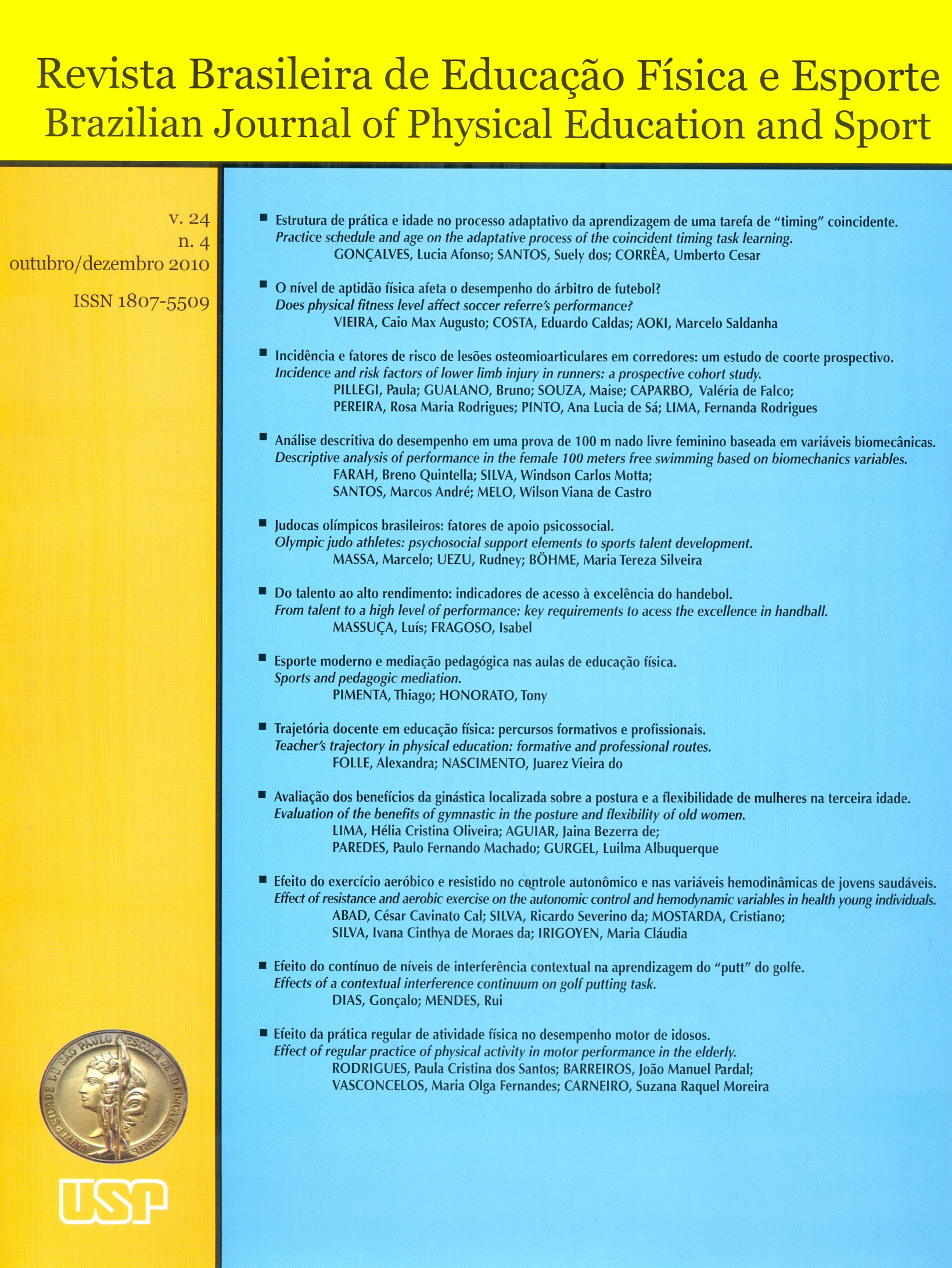Effect of resistance and aerobic exercise on the autonomic control and hemodynamic variables in health young individuals
DOI:
https://doi.org/10.1590/S1807-55092010000400010Keywords:
Acute exercise, aerobic exercise, resistance exercise, heart rate variability, hemodynamicsAbstract
The practice of aerobic and resistance exercises provokes distinct acute and chronic adjustments. Hemodynamic and muscular differences between both exercises have been already documented; nevertheless, regarding the autonomic adjustments, there are few and controversial studies. Therefore, the aim of this study was to analyze the hemodynamic and autonomic adaptations after one bout of aerobic exercise (30 minutes, ergometric bicycle) and resistance exercise (three series of 12 repetitions to the main muscle groups), in young and healthy individuals. For this purpose, blood pressure (BP) and heart rate (HR) were measured, as well as the calculation of the double product and analysis of heart rate variability in time and frequency domains and by Poincaré's Plot. In this protocol, HR during the aerobic exercise was higher than in the resistance exercise (153.32 ± 2.76 vs. 143.10 ± 3.38 bpm, respectively). Aerobic exercise caused an increase in systolic BP during the exercise (7.25 ± 1.52 mmHg) whereas resistance exercise provoked an increase in both, systolic and diastolic BP during its execution (14.83 ± 1.53; 11.92 ± 1.69 mmHg, respectively). Post-exercise hypotension was not observed after none of the exercise sessions. When comparing aerobic exercise with resistance exercise in the recovery phase, it was verified a decrease in HR variability in the resistance session for the following variables: RMMSD (37.74 ± 5.30 vs. 19.50 ± 2.32), NN50 (94.13 ± 23.65 vs. 27.63 ± 6.68), PNN50 (16.10 ± 4.72 vs. 3.53±0.89), SD1 (26.65 ± 3.85 vs. 13.73 ± 1.66), SD2 (88.98 ± 10.71 vs. 61.88 ± 5.49) e HF (257.25 ± 45.08 vs. 102.75 ± 18.75 ms²). In conclusion, in the investigated protocol, the cardiovascular work during the exercise sessions was similar, due to HR increase in the aerobic exercise and of systolic BP increase in the resistance exercise. In the recovery phase, resistance exercise promoted enhanced autonomic alteration, compatible with the maintenance if an increased sympatho-vagal balance.Downloads
Download data is not yet available.
Downloads
Published
2010-12-01
Issue
Section
naodefinida
License
Todo o conteúdo da revista, exceto onde está identificado, está licenciado sob uma Licença Creative Commons (CC-BY)
How to Cite
Cal Abad, C. C., Silva, R. S. da, Mostarda, C., Silva, I. C. de M. da, & Irigoyen, M. C. (2010). Effect of resistance and aerobic exercise on the autonomic control and hemodynamic variables in health young individuals . Brazilian Journal of Physical Education and Sport, 24(4), 535-544. https://doi.org/10.1590/S1807-55092010000400010


